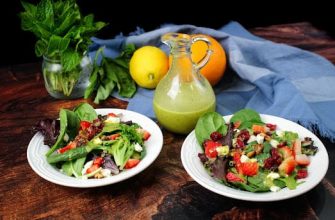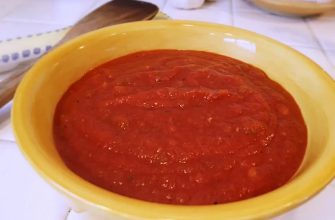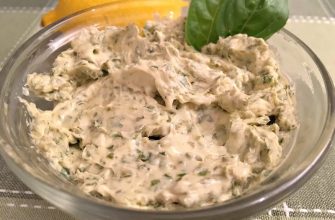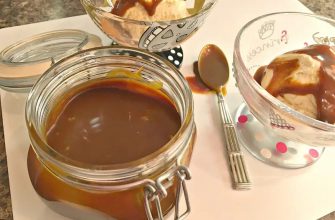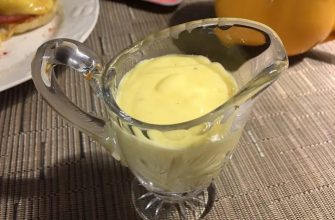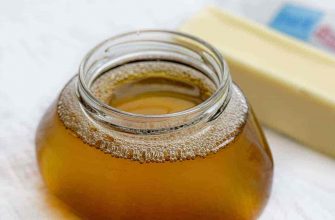Learning how to make buttermilk at home can be a game-changer. Not only does it save you time, but it’s also a budget-friendly alternative. After experimenting with various techniques, I’ve uncovered four different ways to create homemade buttermilk. Today, I’m excited to share my findings with you!
The Quest for Homemade Buttermilk:
As an avid baker for over 15 years, I recently stumbled upon a revelation. The conventional wisdom stated that to make homemade buttermilk, one should combine 1 cup of milk with 1 tablespoon of vinegar or lemon juice. But I couldn’t help but wonder if there was more to it.
The Taste Test:
Curiosity got the best of me, so I decided to conduct a simple taste test. I compared store-bought buttermilk with a cup of milk mixed with vinegar. Surprisingly, the homemade version fell short in both taste and texture. This realization made me question why I had been following this method for so long.
Replicating Store-Bought Buttermilk:
Determined to create a homemade version that rivaled the store-bought variety, I explored different combinations of standard ingredients – milk and acid. To my surprise, I discovered that 1 tablespoon of vinegar wasn’t enough. It took 2 tablespoons to achieve the desired results. From that day forward, my go-to formula for homemade buttermilk became 1 cup of room temperature whole milk with 2 tablespoons of vinegar or lemon juice.
The Importance of Buttermilk in Recipes:
Buttermilk imparts a delightful tang to cakes, bread, and biscuits. It also acts as a tenderizer for gluten, resulting in a softer texture and richer body. When a recipe calls for baking soda, buttermilk becomes an excellent option. Baking soda requires acidic ingredients like buttermilk, lemon juice, or molasses to activate its leavening properties.
Different Variations of Homemade Buttermilk:
You can use the following homemade buttermilk variations in most recipes that call for it.
Vinegar Homemade Buttermilk Recipe:
- 1 cup of room temperature whole milk
- 2 tablespoons of vinegar
Whisk the ingredients together until fully incorporated. Allow the mixture to sit for at least 10 minutes, up to 2 hours. Increasing the vinegar to 2 tablespoons produces a thicker, creamier, and tangier buttermilk, closely resembling the store-bought version.
Lemon Juice Homemade Buttermilk Recipe:
- 1 cup of room temperature whole milk
- 2 tablespoons of freshly squeezed lemon juice
Combine the ingredients and whisk until well mixed. Let the mixture sit for at least 10 minutes, up to 2 hours. For recipes where a hint of lemon flavor is desired, you can use 3 tablespoons of lemon juice. However, for standard recipes calling for buttermilk, stick to 2 tablespoons.
Sour Cream Homemade Buttermilk Recipe:
- 1/2 cup of room temperature whole milk
- 1/2 cup of sour cream
Whisk the milk and sour cream until smooth and creamy. Let the mixture sit for at least 10 minutes, up to 2 hours. This variation yields a thick, creamy, and tangy homemade buttermilk. For an extra tangy flavor, you can add an additional tablespoon of vinegar.
Cream of Tartar Buttermilk Recipe:
- 1 cup of room temperature whole milk
- 2 teaspoons of cream of tartar
Whisk the milk and cream of tartar together until well combined. Let the mixture sit for at least 10 minutes, up to 2 hours. Keep in mind that the cream of tartar buttermilk might not be as familiar, but it offers an interesting alternative. The cream of tartar quickly dissolves into the milk, initially resembling regular milk in texture. However, after letting it sit for about 15 minutes, I noticed that the cream of tartar had solidified at the bottom of the container. To ensure the best results with this version, make sure to whisk it well right before using it.
Does Milk Temperature Matter?
Throughout my research, I couldn’t find any definitive information on whether the temperature of the milk used in making buttermilk makes a difference. So, naturally, I decided to conduct a simple experiment to find out.
In one bowl, I added 2 tablespoons of vinegar to milk that I had heated in the microwave for 20 seconds. Instantly, this version showed a distinct change, curdling and creating a thicker texture. In the second bowl, I added 2 tablespoons of vinegar to cold milk. Surprisingly, the vinegar didn’t have the same effect on texture or thickness.
Conclusion:
Based on my findings, it seems that warm milk accepts the acidity of the vinegar more effectively. This aligns with the baking principle of using room temperature ingredients. Therefore, if you want to achieve the best results when making homemade buttermilk, I recommend using room temperature milk.
Summary of Findings:
After conducting numerous tests and taste comparisons, here’s a summary of the results:
Sour Cream Buttermilk: These biscuits turned out great, with the perfect height and a soft, delicate texture. The golden crust on top and sweet interior made this my favorite version of homemade buttermilk.
Cream of Tartar Buttermilk: Surprisingly, these biscuits had a more cake-like texture. They were tall and delicious but lacked the distinct flaky layers found in other variations. This can be attributed to the cream of tartar, which helps cookies and cakes rise and creates softness. If you prefer melt-in-your-mouth biscuits, give this version a try.
Lemon Juice Buttermilk: These biscuits tasted excellent, had the right height, and boasted flaky layers. There was no noticeable difference between the lemon juice and vinegar buttermilk biscuits.
Vinegar Buttermilk: These biscuits were equally delicious, with the ideal height and flaky layers. Similar to the lemon juice version, there were no discernible differences compared to the lemon juice buttermilk biscuits.
In conclusion, homemade buttermilk can be easily prepared using various combinations of milk and acid. The recommended proportions for each variation are listed below.
Ingredients:
Vinegar Buttermilk:
- 1 cup of whole milk, at room temperature
- 2 tablespoons of vinegar
Lemon Juice Buttermilk:
- 1 cup of whole milk, at room temperature
- 2 tablespoons of fresh lemon juice
Sour Cream Buttermilk:
- 1/2 cup of whole milk, at room temperature
- 1/2 cup of sour cream
Cream of Tartar Buttermilk:
- 1 cup of whole milk, at room temperature
- 2 teaspoons of cream of tartar
Instructions:
Vinegar Buttermilk:
Whisk the ingredients together until fully incorporated. Let the mixture sit for at least 10 minutes, up to 2 hours.
Lemon Juice Buttermilk:
Whisk the ingredients together until fully incorporated. Let the mixture sit for at least 10 minutes, up to 2 hours.
Sour Cream Buttermilk:
Whisk the ingredients together until smooth and creamy. Let the mixture sit for at least 10 minutes, up to 2 hours.
Cream of Tartar Buttermilk:
Whisk the ingredients together until fully incorporated. Let the mixture sit for at least 10 minutes, up to 2 hours. Remember to whisk it well again right before using it to ensure proper consistency.
Now that you have learned how to make homemade buttermilk using different methods, you can enjoy the tangy and creamy goodness in your favorite recipes. Buttermilk is a versatile ingredient that brings a pleasant tang and tenderness to cakes, bread, and biscuits. It also helps activate leavening agents like baking soda, resulting in lighter and fluffier baked goods.
Whether you choose the classic vinegar method, the fresh lemon juice variation, the sour cream option, or the cream of tartar alternative, you can tailor your homemade buttermilk to suit your taste preferences and the requirements of your recipe. Each variation has its own unique characteristics, so feel free to experiment and find the one that suits your needs best.
Remember that when making buttermilk at home, using room temperature ingredients is crucial for achieving the desired results. So, ensure that your milk and other ingredients are at room temperature before proceeding with the recipes.
Now, armed with the knowledge and recipes for homemade buttermilk, you can confidently tackle any recipe that calls for this delightful ingredient. Enjoy the process of creating your own buttermilk and savor the delicious results it brings to your baked goods.
Happy cooking and baking!










